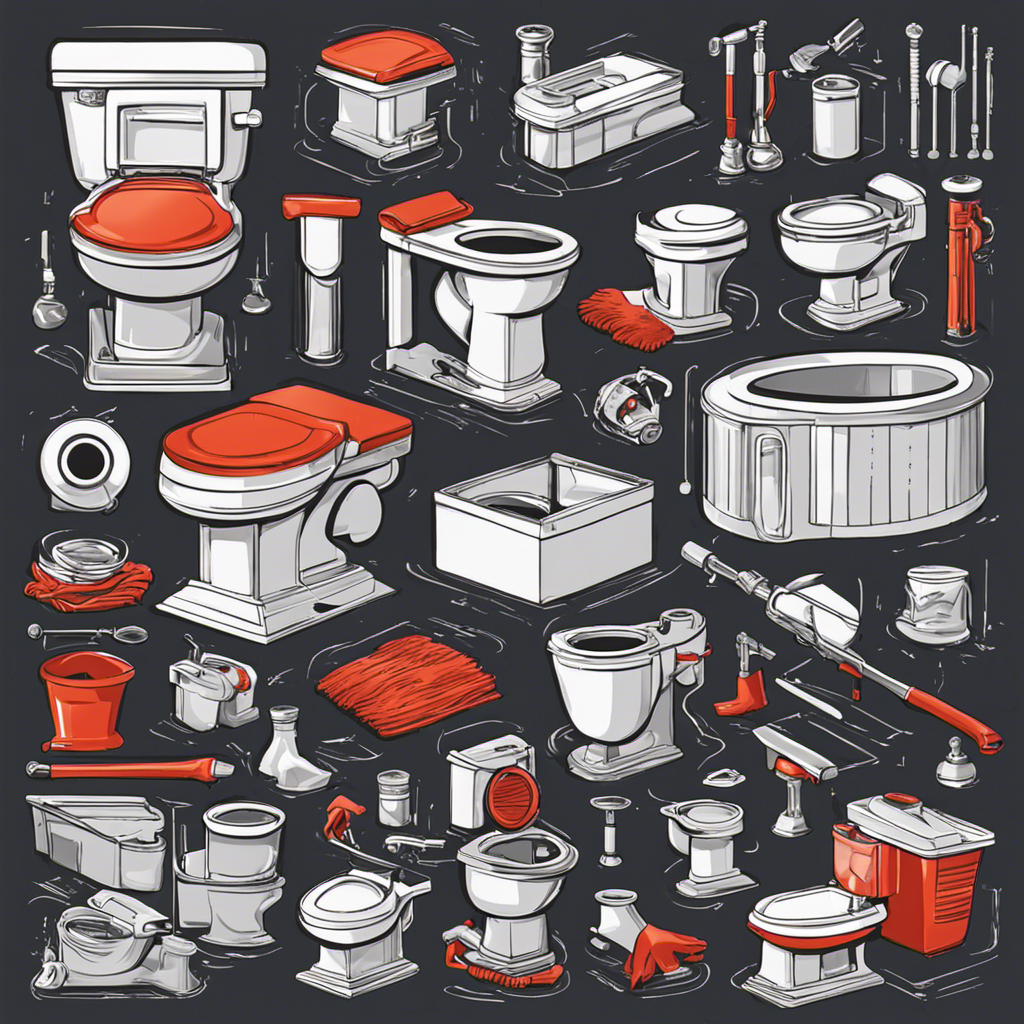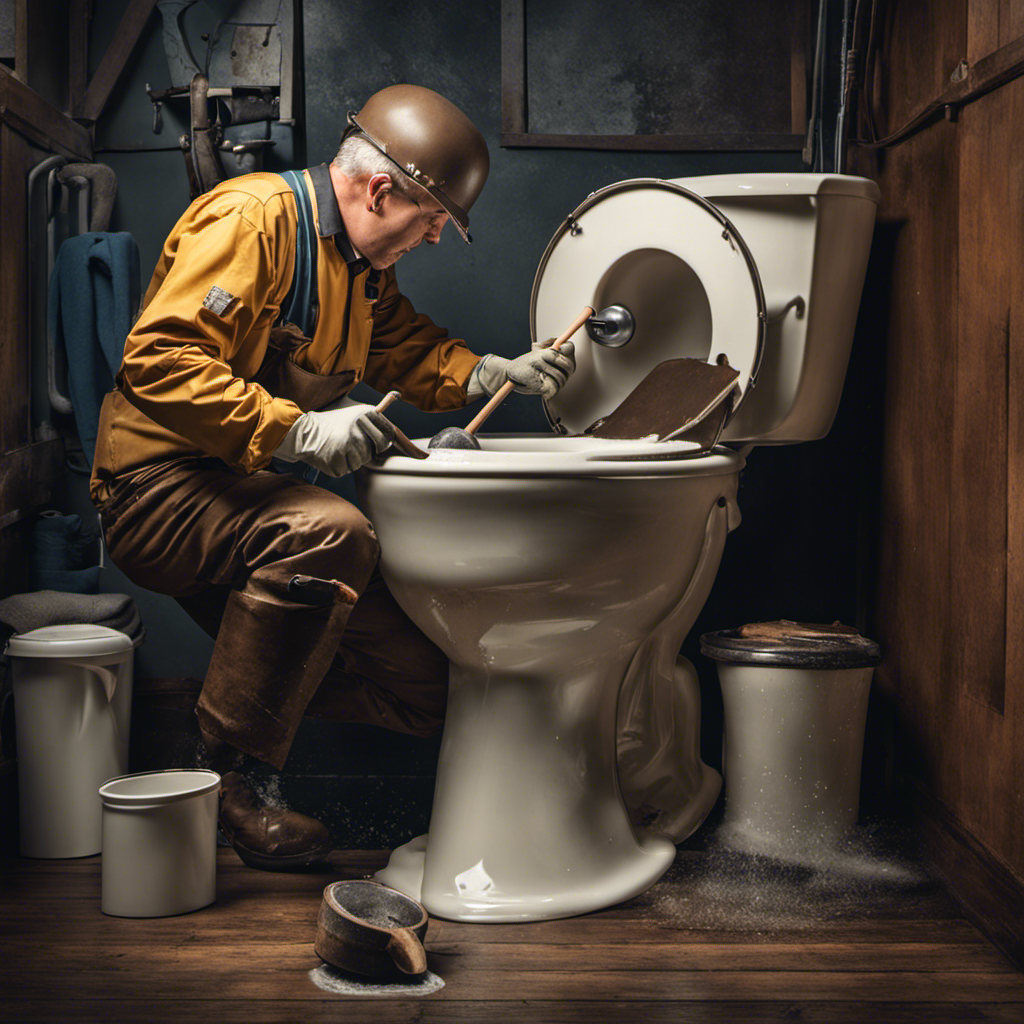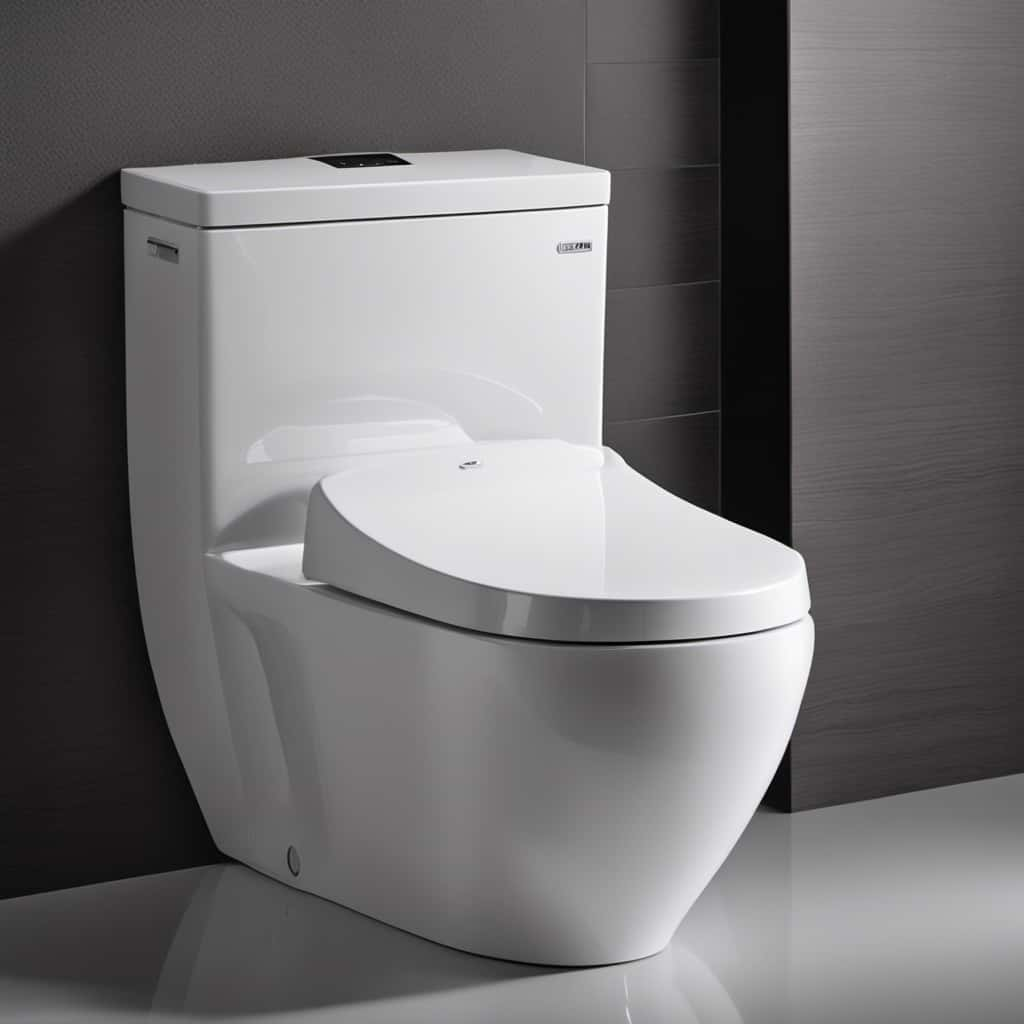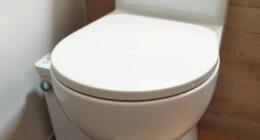Hey there! Ever had the unfortunate experience of dealing with a blocked toilet? Trust me, I’ve been there too. But don’t worry, I’ve got you covered with a step-by-step guide on how to clear that pesky blockage.
In this article, I’ll take you through the process of:
- Identifying the blockage
- Gathering the necessary tools
- Using a plunger
- Utilizing natural remedies
And if all else fails, I’ll show you when it’s time to call in the professionals. So let’s dive in and get that toilet back in working order!
Key Takeaways
- Common causes of a blocked toilet include a buildup of toilet paper or debris in the drain pipe.
- Signs of a blockage caused by a foreign object include strange noises when flushing or unusually low water level.
- The plunger is one of the most common and effective tools for clearing a blocked toilet.
- If natural remedies and DIY methods fail, it may be necessary to seek professional help to address the blockage.
Identifying the Blockage
Now, you’ll need to identify what’s causing the blockage in your toilet. There are several common causes for a blocked toilet, and recognizing the signs and symptoms can help you determine the best course of action.
One of the most common causes is a buildup of toilet paper or other debris in the drain pipe. Signs of this type of blockage include water rising to the brim of the bowl when you flush, or slow drainage.
Another common cause is a foreign object, like a toy or sanitary product, that has been flushed down the toilet. If you hear strange noises when you flush or notice that the water level is unusually low, this could indicate a blockage caused by a foreign object.
Transitioning into the next section on gathering the necessary tools, it’s important to first determine the cause of the blockage so you can be prepared with the appropriate tools for clearing it.
Gathering the Necessary Tools
First, you’ll need to gather the necessary tools for the task at hand. To unclog a toilet, you will need a plunger, a toilet auger, rubber gloves, and a bucket. These tools will help you tackle even the toughest toilet blockages.
Let’s take a closer look at each tool and its purpose:
| Tool | Purpose |
|---|---|
| Plunger | Creates pressure to dislodge the blockage |
| Toilet Auger | Used for deeper blockages that a plunger can’t reach |
| Rubber Gloves | Protects your hands from germs and sewage |
| Bucket | Catches any excess water or debris during the unclogging process |
Now that you have gathered all the necessary tools, you are ready to move on to the next step: the actual unclogging process. But before we do that, let’s briefly discuss some common causes of toilet blockages. These can include excessive toilet paper usage, foreign objects accidentally flushed down the toilet, or a build-up of waste and debris over time. Knowing the cause can help you determine the best technique to use when unclogging your toilet.
Using a Plunger to Clear the Blockage
Once you’ve gathered all the necessary tools, you can start using the plunger to fix the clog. Using a plunger is one of the most common and effective methods for clearing a blocked toilet.
To begin, make sure there is enough water in the bowl to cover the rubber end of the plunger. Position the plunger over the drain hole and push down firmly, then pull up quickly. Repeat this plunging motion several times, maintaining a strong seal around the drain. This will create suction and dislodge the blockage.
If the water starts to drain, continue plunging until it flows freely. If the clog persists, you may need to try alternative methods or utilize natural remedies to clear the blockage, which will be discussed in the next section.
Utilizing Natural Remedies to Clear the Blockage
If the plunger doesn’t work, you can try using natural remedies to fix the clog. Here are three natural remedies that can help clear a blocked toilet:
-
Baking Soda and Vinegar: Start by pouring one cup of baking soda into the toilet bowl. Then, add two cups of vinegar. Let the mixture sit for about 30 minutes. Finally, flush the toilet to see if the clog has cleared.
-
Hot Water and Dish Soap: Boil a pot of water and add a few squirts of dish soap. Carefully pour the hot water into the toilet bowl. The heat and soap can help break down the blockage. Allow the mixture to sit for a few minutes before attempting to flush.
-
Epsom Salt and Lemon Juice: Mix half a cup of Epsom salt with half a cup of lemon juice. Pour the mixture into the bowl and let it sit for at least an hour. Then, flush the toilet to see if the clog has been resolved.
Remember, natural remedies can be effective, but they may not work for all types of blockages. If the blockage persists, it’s best to seek professional help.
Transition: If these natural remedies don’t work, it may be time to consider seeking professional help to clear the blockage.
Seeking Professional Help if the Blockage Persists
When natural remedies fail to fix the issue, it’s time for you to consider reaching out to a professional for help with the persistent blockage. While DIY methods for minor toilet blockages can be effective, there are times when a more serious plumbing issue may be at play.
So, how do you know when it’s time to call in the experts? Well, there are a few signs to look out for. Firstly, if the blockage persists despite your best efforts, it’s a clear indication that there may be a deeper problem.
Additionally, if you notice water backing up in other drains or toilets in your home, it could be a sign of a larger plumbing issue. Finally, if you start to detect foul odors or hear strange gurgling sounds coming from your toilet, it’s time to seek professional help.
Conclusion
In conclusion, tackling a blocked toilet can feel like diving into a deep sea of frustration. But fear not, for armed with the right tools and techniques, you can navigate these treacherous waters with ease.
Remember to identify the blockage, gather your trusty plunger, and unleash its power with a vigorous plunge.
If nature’s remedies fail, don’t hesitate to call in the professionals.
With determination and a touch of finesse, you can triumph over the clogs that dare to challenge you.










